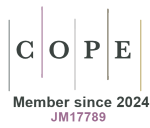An Approach to Evaluate Payment-by-Results Agreements
DOI:
https://doi.org/10.33393/grhta.2016.410Keywords:
Price negotiation in Oncology, Payment-by-Results agreements, Risk sharingAbstract
Payment-by-Results (PbR) agreements are negotiated by the Italian Medicine Agency (AIFA) with the purpose of minimizing the risk of paying for unsuccessful treatments in the early phases of access when real world utilization evidence is limited. According to such agreements, the manufacturer shall pay back the full drug cost of the therapy in case of early drop-outs due to progression or unsustainable toxicity. This short paper is aimed at showing that a PbR agreement on a new drug is equivalent to an improved evaluation of the drug efficacy, under a payer's perspective. When the National Health Service (NHS) pays the treatment cost only for those patients who are still responding well at a pre-determined timeline, this means that it takes into consideration a sub-population which has a better clinical outcome as compared with the whole eligible population. In other words, the NHS would actually pay for a drug with a higher efficacy than the one which the price negotiation was based on. This argument is supported by a couple of graphical examples, built with data from two clinical studies: GOG-0240 (Avastin®, bevacizumab) and EMILIA (Kadcyla®, trastuzumab emtansine) respectively. The response to therapy is defined in terms of progression-free survival. In a context of economic pressure, PbR is a tool allowing payers to rationalize their spending reducing the risk of paying for unsuccessful treatments, while still funding innovation and therefore increasing the value-for-money.










